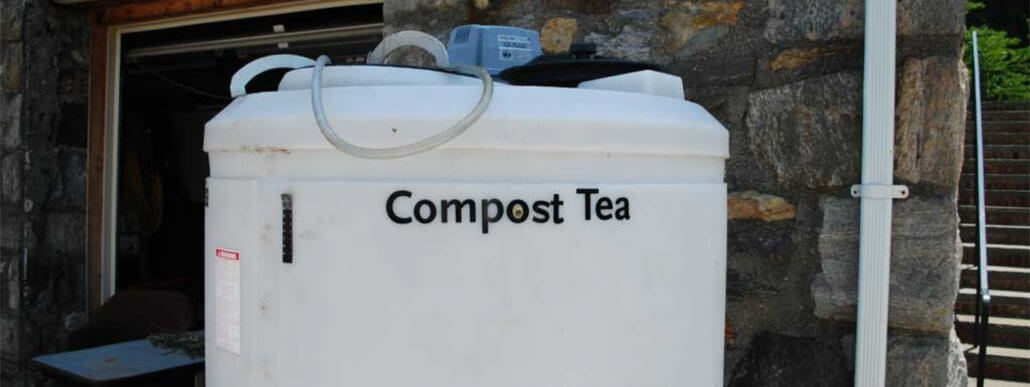Farmers apply chemical fertilizers and pesticides to increase plant growth. Often it results in the exact opposite. Some chemical-based fertilizers and pesticides destroy beneficial microbes that are crucial for plant growth. Compost tea, on the other hand, increases these beneficial microbes both in the soil and on the plant.
What is compost tea?
Compost tea is a liquid that is generated by extracting beneficial microbes and nutrients from good quality compost, through the process of brewing and oxygenation. These beneficial microbes include fungi, bacteria, arthropods, nematodes, and protozoa.
Benefits of compost tea.
- Reduces the need for pesticides, through an increase in natural predators.
- Provides beneficial microbes that protect the plant surface leading to increased plant growth.
- Improves foliar uptake resulting in increased nutrient intake.
- Creates a balanced soil food web, which in turn builds good soil structure and increases nutrient retention.
- Increases nutrient availability to plants due to mutual relationships between microbes.
Some practicalities
There are a few important things to note for any farmer interested in creating compost tea. I will discuss a few pointers that can help get you started.
What do I need to make compost tea?
- A tank that will contain the water.
- An air pump and hoses that will facilitate aeration, the hose should be connected from the bottom of the tank.
- A “Teabag”, which is any membrane that will hold the compost. This should be submerged at the top of the tank.
- Good quality water.
- Food for microbes.
- Good quality finished compost that is high in beneficial microbes and nutrients.
For further reading on compost
Aeration of compost tea
For the compost tea to be aerobic, the air pump must create enough water agitation to ensure good water aeration. The ratio of compost to water must also be correct. If there is too much compost it will spike the bacterial population, which can lead to anaerobic conditions. When anaerobic conditions are created, there will be poor extraction of beneficial microbes and nutrients. The oxygen levels should never drop below 5.5 ppm as it will then become anaerobic.
Compost teabag
The membrane size of the “teabag” regulates what elements of the compost will be extracted into the water. When compost tea is going to be applied through irrigation or sprayers a smaller membrane should be used to prevent blockage during spreading.
Water quality and temperature
The water used to create compost tea should contain minimal salts, metals, pesticides, and other chemicals. Contaminated water will affect the number of beneficial microbes and affect the end quality of the compost tea. Water temperature is also very important. If the water is too cold the extraction and growth of microbes will be slowed down, whereas, If the water is too hot microbes will be subdued and there will be excessive evaporation.
Brewing and applying compost tea
Compost tea that is brewed for a longer period will result in more microbes and nutrients being extracted from the compost. However, well-aerated compost tea requires less brewing time. A good brewing system can result in compost tea being made within 24 hours. On completion, compost tea should be applied within 6 hours if it is not aerated. If it is not applied within this time, the compost tea must be re-agitated, and more food must be fed to the microbes.
Types of food that can be fed to microbes:
- Kelp
- Rock dust
- Molasses
- Humid acid
- Fulvic acids
It is important to note that different foods feed different organisms. Solid feeds must be added to the teabag, whilst soluble materials should be added to the water.
In which context is compost tea most beneficial?
Compost tea is especially beneficial in soils where the fertility is well balanced, and a bridge is needed until the soil is healthy enough to not need any inputs at all. As Trace & Save, we believe that this is possible in regenerative soils. Compost tea serves as a useful tool to take a healthy soil to a regenerative soil by promoting the microbial population, especially towards achieving a balanced soil food web. In this context, compost tea replaces the need for chemical fertilizers and pesticides. In soils that lack fertility, other inputs, such as fertilizers and compost are needed to build a balance before only tea can be used.
Conclusion
By no means am I saying that compost tea is the silver bullet. However, if used correctly compost tea can help reduce the use of harmful pesticides through the introduction of beneficial microbes and at the same time bring nutrients that are essential for plant growth and soil functions.
Source
https://www.soilfoodweb.com.au/about-our-organisation/actively-aerated-compost-tea-information – Accessed 1 February 2021
https://treeyopermacultureedu.com/chapter-8-soils/compost-teas-and-extracts/ – Accessed 2 February 2021
https://www.ecofarmingdaily.com/build-soil/soil-inputs/compost/compost-tea/ – Accessed 2 February 2021

